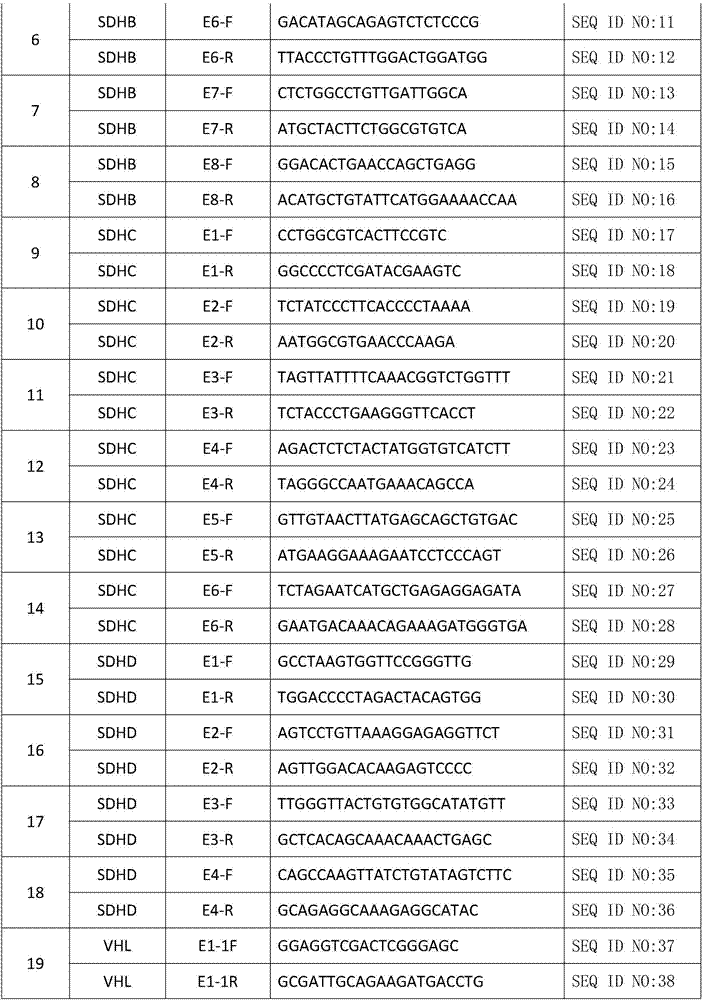PCR primer used for building library for chromaffin cell pathogenic gene next generation sequencing and library building method
A disease-causing gene and chromaffin cell technology, applied in the field of molecular biology, can solve problems such as restricting the development of technology and research, and achieve the effect of low cost and good uniformity
- Summary
- Abstract
- Description
- Claims
- Application Information
AI Technical Summary
Problems solved by technology
Method used
Image
Examples
Embodiment
[0029] This embodiment relates to a method for building a library for next-generation sequencing of chromaffin cell pathogenic genes, including the following steps:
[0030]1. Using the extracted human genomic DNA as a template for PCR amplification
[0031] 2. The conditions and primers for PCR amplification are as follows:
[0032] Reaction system (take 50ul as an example):
[0033]
[0034] PCR reaction conditions: pre-denaturation at 95°C for 5-10 minutes, denaturation at 95°C for 15-30s, annealing at 56-64°C for 15-60s, extension at 72°C for 15-60s, and a total of 20-35 cycles of denaturation, annealing and extension.
[0035] The formulation of the above 10×amplification buffer can be selected: 100mM Tris-HCl, pH 8.3at 25°C, 500mM KCl, 25mM MgCl2, 10mM EDTA, 1mM Tween20.
[0036] The primer sequences are shown in Table 1:
[0037] Table 1
[0038]
[0039]
[0040]
[0041]
[0042] 3. Recover the amplified PCR fragments and perform sequencing to build...
PUM
 Login to View More
Login to View More Abstract
Description
Claims
Application Information
 Login to View More
Login to View More - R&D
- Intellectual Property
- Life Sciences
- Materials
- Tech Scout
- Unparalleled Data Quality
- Higher Quality Content
- 60% Fewer Hallucinations
Browse by: Latest US Patents, China's latest patents, Technical Efficacy Thesaurus, Application Domain, Technology Topic, Popular Technical Reports.
© 2025 PatSnap. All rights reserved.Legal|Privacy policy|Modern Slavery Act Transparency Statement|Sitemap|About US| Contact US: help@patsnap.com



